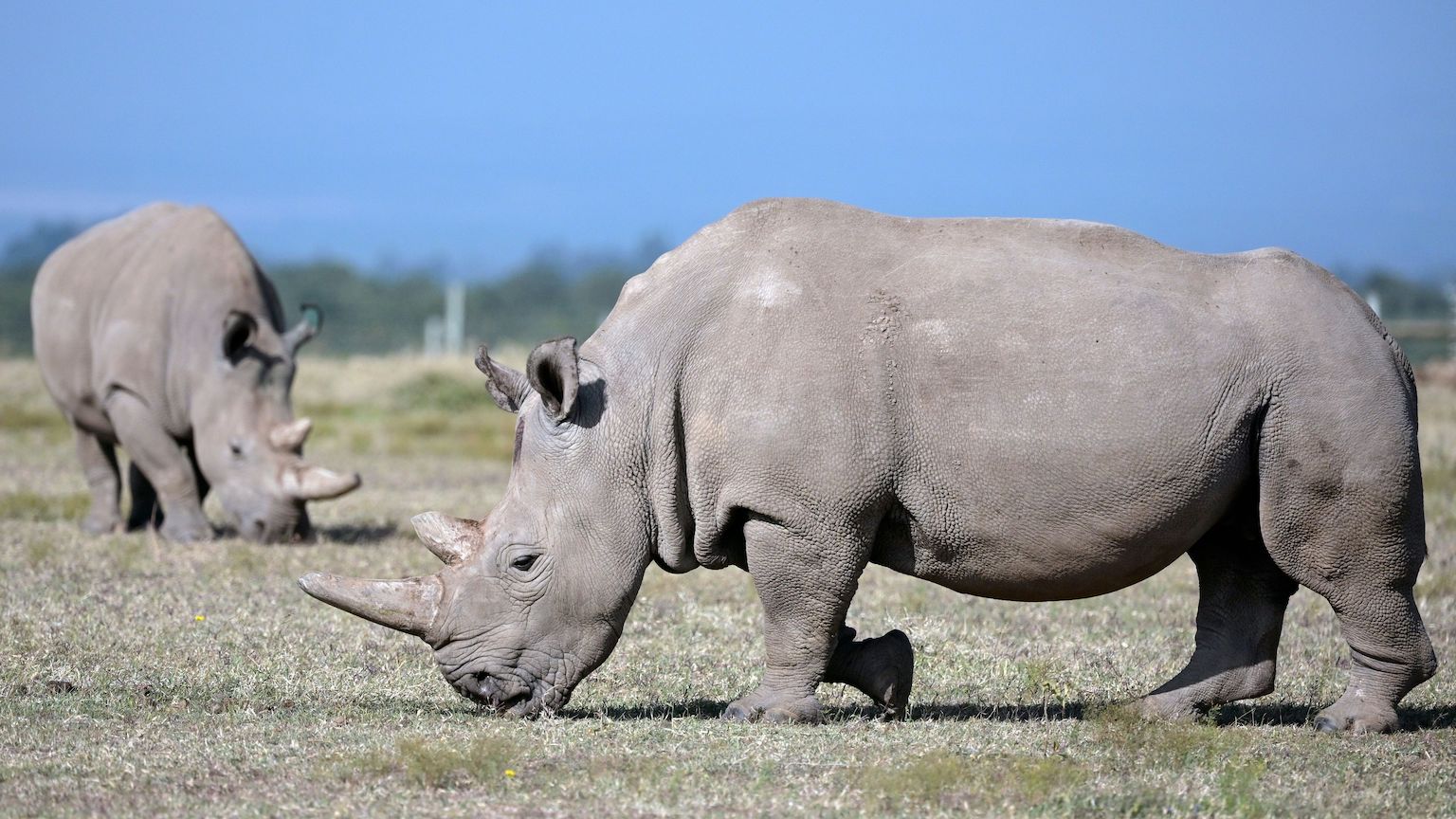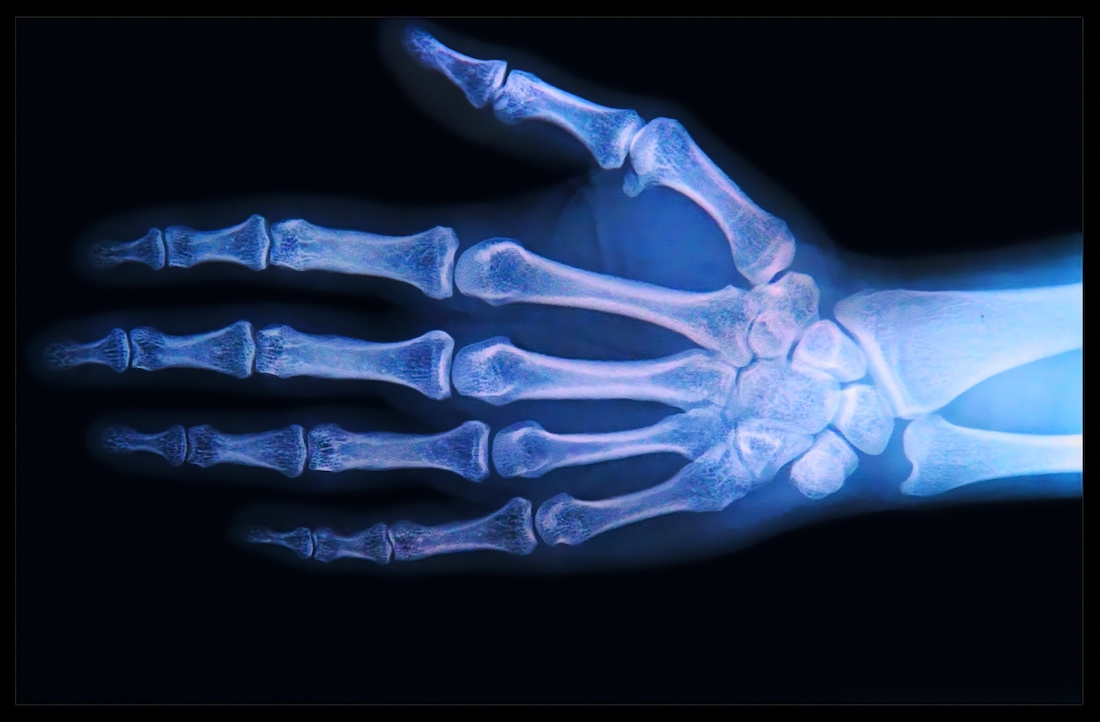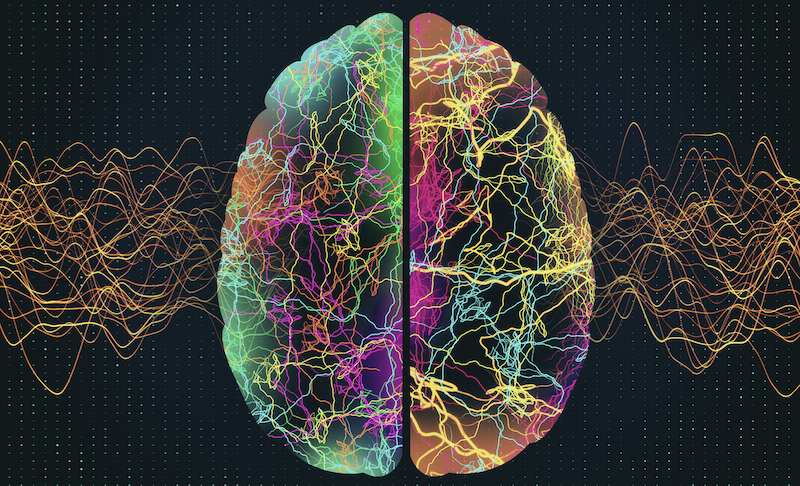Northern white rhino: resurrecting an extinct species in four steps

- Scientists at the San Diego Zoo are working to bring the northern white rhinoceros back from extinction.
- Their strategy centers on creating new egg and sperm cells from frozen skin cells, which has never been done for a rhinoceros.
- If successful, the strategy could be used to rescue other extinct or endangered species.
Baby-making is a generally simple affair: Fertilize an egg with sperm. This will create an embryo. If the embryo is not already in a womb, transfer it immediately and carefully. Then wait patiently several months.
For the northern white rhino, however, this process is far more complicated, largely because the species is extinct. Consequently, instead of starting with egg and sperm, baby-making begins with skin cells.
Those skin cells are stored at a special facility within the San Diego Zoo called the Frozen Zoo, which cares for over 10,000 living cell types representing nearly 1,000 animal species. In that repository, there are skin cells from twelve northern white rhinos, enough genetic diversity to create a sustainable population.
There are four (giant) steps required to create a herd of northern white rhinos from a vial of frozen skin cells: (1) Convert skin cells into stem cells. (2) Reprogram those stem cells to become egg and sperm cells. (3) Fertilize the egg with the sperm to create an embryo. (4) Transplant the embryo into a womb, where it will develop into a baby rhinoceros.
However, there is a problem with this strategy: No one knows how to do any of these steps in white rhinos. And yet, in the last three years, the San Diego Zoo scientists have made significant progress on all of thm.
Step 1: Convert skin cells into stem cells
Stem cells are the starting point for all other cells, including egg and sperm cells. Theoretically, egg and sperm cells could be created if the researchers had northern white rhino stem cells. But they do not. They just have skin cells, which makes things complicated.
Once a skin cell is a skin cell, that is the end of the line; it will not become any other type of cell. The same is true of nerve cells, muscle cells, and any other kind of fully differentiated cell. However, though the cells cannot turn into other kinds of cells, the information to do so is still contained in the cell’s genes. Those genes are just inaccessible to the cell.
In 2006, Shinya Yamanaka discovered how to access those genes, essentially resetting and de-programming the skin cell back into a stem cell. He found only four regulatory molecules (called “Yamanaka factors”) are necessary for this reset. This earned him a Nobel Prize and kick-started a new age of stem cell and anti-aging reseach.
Since Yamanaka’s discovery, scientists around the world have been studying how to use the Yamanaka factors to reset cells in dozens of animals: mice, humans, monkeys, cats, pigs, horses, chicken, quail, zebra fish, snow leopards, Bengal tigers, jaguars, Tasmanian devils, mink, and even the humble platypus.
In 2021, the researchers at San Diego Zoo added northern white rhinos to that list. They spent years modifying Yamanaka’s technique so it would work on white rhino skin cells. At first, they were lucky to get just one stem cell from 100,000 skin cells. After a little tweaking, they made remarkable progress: seven clones per 100,000 skin cells — a 700% increase in efficiency.
“The reprogramming process even in humans has a low success rate, which can be mitigated by starting with large numbers of cells, and has been the focus of much protocol optimization,” said Marisa Korody, a behavioral geneticist involved in San Diego Zoo’s northern white rhino project. The protocol might require several more years of optimization, but that has not stopped the scientists from moving forward.
Step 2: Reprogram the stem cells to become egg and sperm cells
Programming a stem cell to become egg and sperm cells (collectively called gametes) is tricky. In order to create them, stem cells require intracellular signals whose timing, concentration, and duration are just right. If those signals are imperfect, the stem cell might not be programmed to create a functional gamete.
“The process of making gametes from stem cells has only been completely successful in mice, which have different embryonic development than other mammals,” said Korody. She is referring to the work of Katsuhiko Hayashi at Kyushu University. Over the last several years, Hayashi and his team discovered how to manipulate intracellular signals so that mouse stem cells turn into gametes. Furthermore, Hayashi used those gametes to birth baby mice that were healthy and fertile.
Korody and her colleagues have not discovered which intracellular signals are needed to program northern white rhino stem cells to become gametes. They have, however, accidentally created gametes. When the skin cells were converted back into stem cells, some of them spontaneously created gametes, which is a normal phenomenon that can occur when stem cells are kept in laboratory conditions. This was wonderful news because it showed that their stem cells have the potential to create gametes, even if they don’t fully understand why.
Step 3: Fertilize the egg with sperm
For an egg to be fertilized, it must be alive and mature. Normally, the ovaries maintain an environment that fulfills these requirements. But since the scientists will create and fertilize northern white rhino eggs in a laboratory, they must learn how to mimic the ovarian environment. Once again, this involves finding a Goldilocks Zone: the temperature, nutrient and hormone concentrations, and the ratio of carbon dioxide to oxygen must all be just right.
The scientists do not have access to northern white rhino eggs, so they used southern white rhinoceros (SWR) eggs to find the Goldilocks Zone. For years, the researchers only had access to eggs harvested after a SWR passed away, which are not nearly as healthy as eggs harvested from living rhinos. Although they were never able to get these eggs to mature, they were able to keep them alive. In March 2020, they finally got their hands on healthy eggs.
“Right before COVID hit and shut everything down, we collected 22 [eggs] from our females at the rhino rescue center. And we got a 50% maturation rate which was fantastic for our first attempt, and we actually produced an embryo,” said Barbara Durrant, the director of Reproductive Sciences at SDZ. In the next several weeks, the research team plans to collect more SWR eggs so they can continue to improve their technique.
Step 4: Transfer the embryo into a womb
The womb is a dynamic environment, changing to support the needs of the developing embryo. For healthy development to occur, the embryo and the womb must be in sync with each other.
“No one knows anything about the degree of synchrony that’s required in the species.” said Durrant. “There’s only been a very few attempts and none have been successful. And probably one of the biggest reasons for that is asynchrony between the embryo and in the uterus.”
To understand how to synchronize the embryo and womb, the researchers rely on ultrasound technology. Although other technologies may be more sensitive, they are also more invasive and require the rhino to be sedated or restrained. For the researchers at San Diego Zoo, that is not an option.
“[T]hey are not in a squeeze or restraint chute at any time; they can move around. And if they choose not to cooperate on any given day, they don’t. Everything that we do with them is voluntary,” Durrant explains. “So if they are upset because the wind is blowing, or you know, there’s a predator scent in the air or something like that, and they don’t choose to cooperate with them, we don’t do it.”
The researchers have done over 1,000 ultrasounds on the rhinos that they care for, and they have collected a lot of information about their reproductive system. Armed with this data, Durrant and her team can determine when the rhinos are most receptive to embryo transfers. Also, the researchers have found a regimen of hormone treatments that can increase a rhino’s receptiveness by inducing ovulation.
“[W]e can predictably get them to ovulate within 48 hours, and that took a couple of years for us to figure out. So every step of the way is kind of a long process, but each step takes us closer to success”.
Their findings have already paid off. In 2019, two SWRs gave birth through artificial insemination, a feat that had only ever been accomplished once. The rhino calves, Edward and Future, are happy and healthy. And their mothers, Victoria and Amani, are likely to be the first to receive embryo transfers because they have proven capable of becoming pregnant, giving birth, and raising the young.
The tools of resurrection
Although these researchers’ work focuses on white rhinos, the strategies that they are developing and testing may become universal tools of resurrection. These techniques could then be used to bring back species that are currently extinct or to conserve species that might go extinct.





